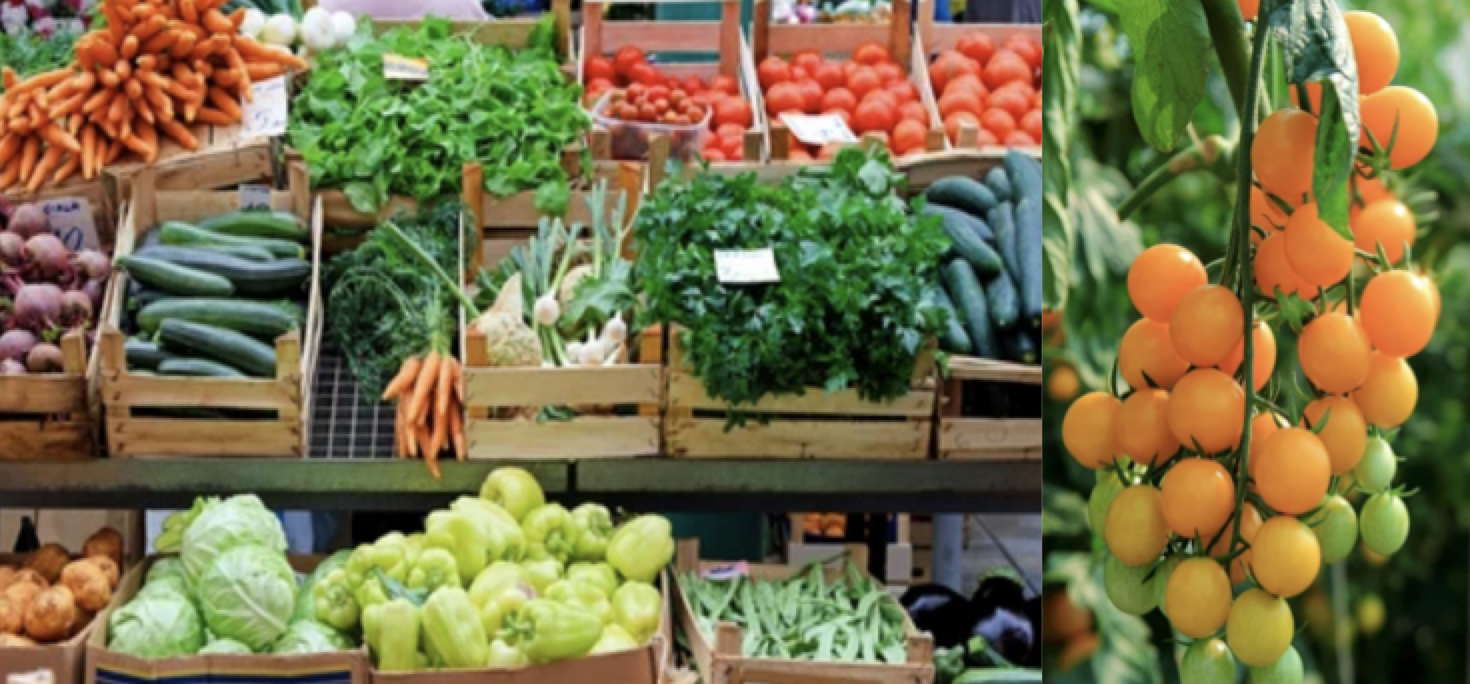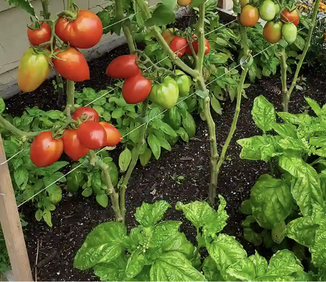|
Story by Susann C., Pitt County Arboretum Extension Master Gardener Volunteer Why do people like to grow vegetables? There are so many different reasons. Many people find gardening to be a source of relaxation, a way to enjoy their backyards. Some people like growing their own produce because they like to know where their food comes from and whether it has been sprayed with herbicides or is organic. Others appreciate being less dependent on grocery stores with their rising prices and limited inventory. Then there are folks who welcome variety and trying new foods. Finally, the satisfaction obtained from eating and sharing fresh produce with friends and neighbors, and giving away the surplus is hard to beat. In this mini-guide, we’ll take you through the key steps to growing vegetables in your own yard. Selecting a site It begins with selecting a site. Some factors to consider include: Getting enough sun Since vegetable plants need at least six hours of direct sunlight every day, selecting a sunny area is crucial. If you have a sun-filled patch in your yard, you can plant rows of vegetables in an in-ground garden or in containers. Plant the vegetables away from the shade cast by buildings, fences, and shrubs. Beans, tomatoes, peppers, eggplants and melons — among the plants that flower and set fruit — need more sunlight. Some vegetables tolerate shade better than others. These include broccoli, kale, cabbage, collards, lettuce, parsley and spinach — vegetables that produce edible stems and leaves. Plants with edible roots, such as beets, carrots, radishes and turnips also tolerate shade.
https://www.ncagr.gov/divisions/agronomic-services/soil-testing Avoid using garden soil for container gardening because garden soil is heavier and can quickly become compacted and waterlogged in containers. Garden centers have soil specifically formulated for containers. The New Demonstration Vegetable Garden at the Pitt County Arboretum The new demonstration vegetable garden is to the left of the Pitt County Agricultural Center as you come in, and then around the side.
Step 3: Selecting what to grow ✓ Choose what you and your family like to eat. ✓ Don’t overplant. You want growing vegetables to be a pleasurable activity, not something that becomes a chore because you’ve planted way too much. ✓ Consider what’s readily available locally. For instance, it’s easy to find red tomatoes, but not heritage tomatoes, and you will pay a premium for these. A basket of orange cherry tomatoes will set you back a small fortune in the grocery store. Or you buy one plant and harvest hundreds of tomatoes over months. ✓ You can buy common herbs or grow them for pennies from seeds. In addition to being inexpensive, the quality and taste of what you grow may also be superior to what you can purchase. The decision was made to plant vegetables that are commonly grown and consumed in Eastern North Carolina in the demonstration garden. These include fall crops such as carrot, spinach, kale, and lettuce seeds.
Stagger your planting Plant seeds at different times so that you will have a supply of lettuce or other produce through the season rather than too large a supply at one point. Consider that some crops mature quickly (e.g. radishes and bush beans), while others take many more days to mature (e.g. tomatoes, peppers). ✓ In addition to being a natural culinary pairing, basil protects tomato plants by repelling thrips and disorienting moths, which lay tomato hornworms. Basil also attracts bees. Parsley also attracts beneficial insects to protect and pollinate tomatoes. ✓ Caterpillars enjoy kale, cabbage, and broccoli. But growing nasturtiums – edible flowers – close to these vegetables will keep caterpillars out. ✓ Most insects in the garden are beneficial insects, helping with pollination. Some plants attract beneficial insects. For example, borage attracts pollinating insects to boost flowering crop plants such as tomatoes and squash. Eastern North Carolina is fortunate to have a long growing season, with the opportunity to plant thousands of fruits, vegetables, and herbs. Many sources of information are readily available for learning how to grow a home vegetable garden. Here are just a few: Information Sources: Agronomic Division. Soil Testing: Enhancing land productivity, nutrient use efficiency & environmental quality. 2008. Raleigh, NC: N.D. Department of Agriculture and Consumer Services. Accessed at https://www.ncagr.gov/divisions/agronomic-services/soil-testing Shawn Banks and Lucy Bradley. 2023. Vegetable Gardening: A Beginner’s Guide. NC State Extension, available at https://content.ces.ncsu.edu/home-vegetable-gardening-a-quick-reference-guide Farmer’s Almanac. Vegetable Gardening for Beginners: The Complete Guide. At https://www.almanac.com/vegetable-gardening-for-beginners See the online planting instructions, gardening calendars, as well as guides for how to design a vegetable garden. Michael Fine. Growing Vegetables in Central North Carolina. March 24, 2022. Zoom presentation sponsored by the North Carolina Extension Master Gardener Volunteer Association (NCEMGVA). https://growforit.ces.ncsu.edu/activities-for-kids/square-foot-gardening/ Kathleen Moore & Lucy K. Bradley, editors. “Chapter 16: Vegetable Gardening,” in North Carolina Extension Gardener Handbook. 2018. North Carolina State University. This mini-guide was written by Susann Camus, an Extension Master Gardener Volunteer (EMGV) with Pitt County, with assistance from Matt Stevens, the Pitt County Extension Director and Horticulture Agent, and Pitt County Demonstration Vegetable Garden EMGV team members, Alta Andrews, Dell Enecks, Tommy McDaniel, and Diane Strathy.
Published on the Pitt County Arboretum website in January 2024.
1 Comment
Leave a Reply. |







